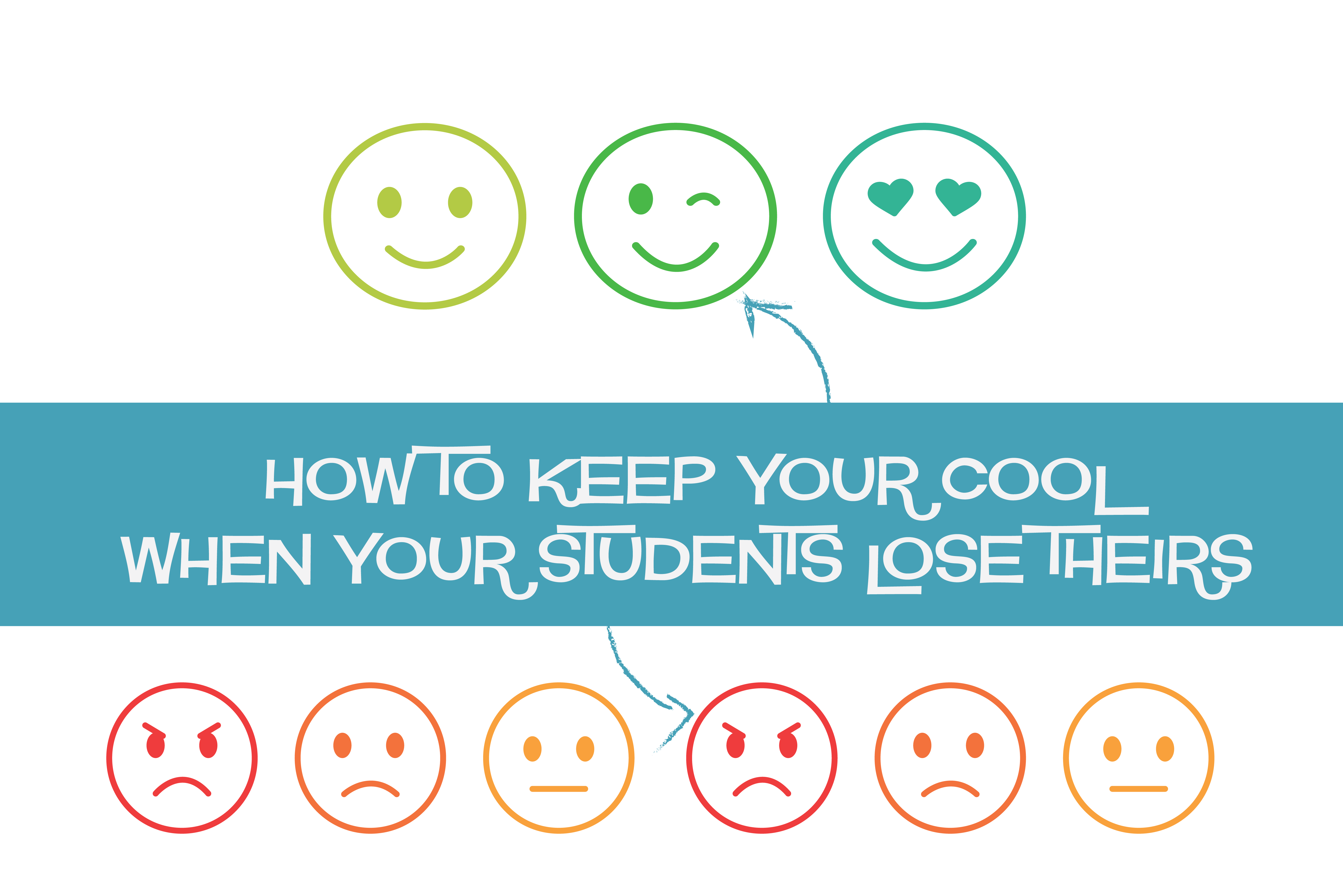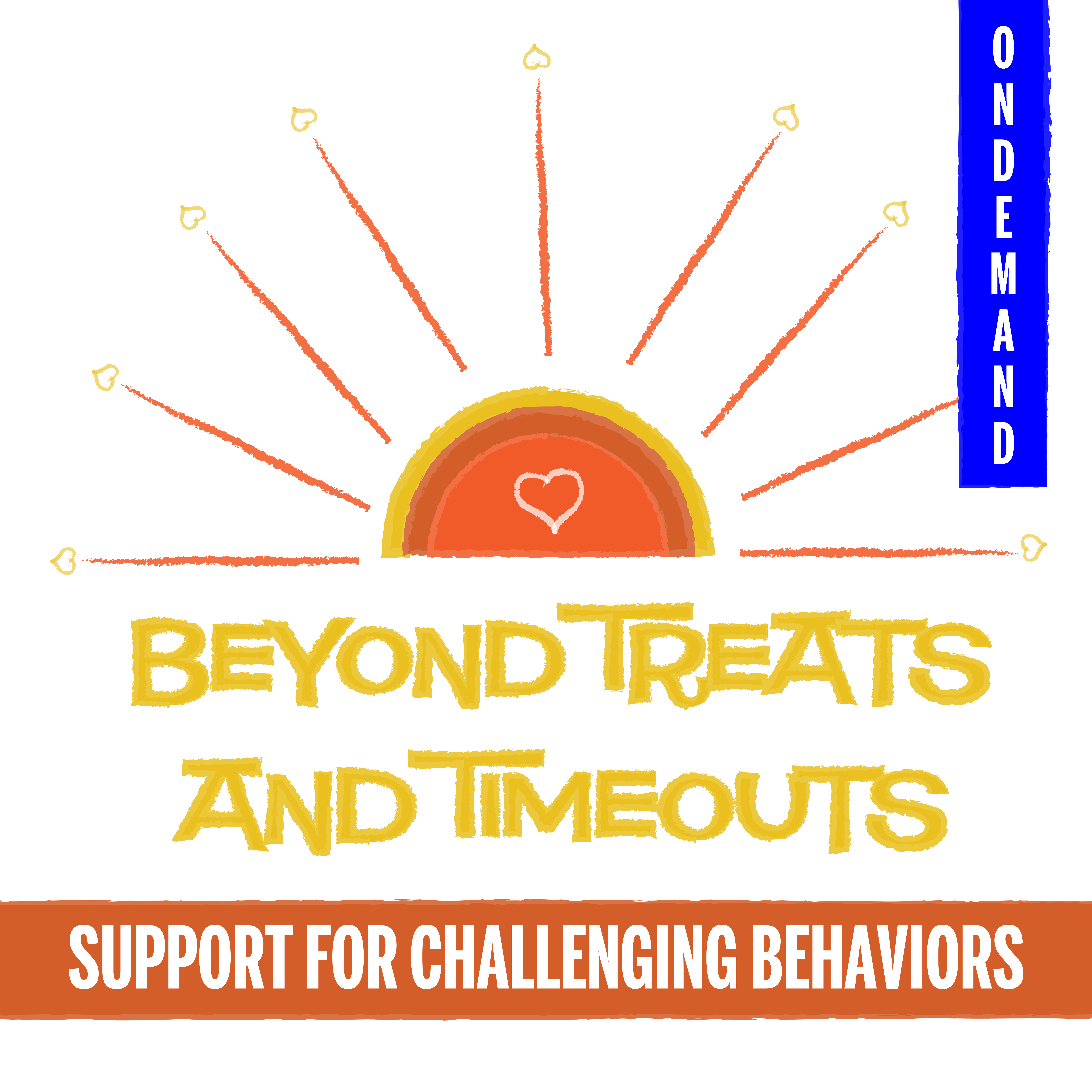When a student is in a “reactive brain”, or the flight, flight, freeze, or faint brain, we want you to have clear steps to take. Having clarity helps you remain calm, be at your best, and allows you to support the student in need.
The steps below are divided into three phases to help keep you keep organized and feeling ready to help the student get back into their “ready brain”. Remember, these steps should be personalized for your situation and in ways that maintain a strong relationship between you and your students. They are, however, listed in a purposeful order or sequence that you are invited to follow.
Entering Stormy Waters Phase
Step 1: Calm and Ready Yourself
- What to think: This student needs my support. This student is really struggling. This student is communicating and needing to connect. This is not personal and I am letting go of expectations.
- What to do: Take a few breaths, or in another way, ready yourself to be calm, cool, and collected.
- What to say: To yourself, say something like, “My goal is to help this student feel safe, seen, soothed, and secure.”
- Why this step is key: Students will see you as a “safe harbor”. And because of the power of co-regulation and mirror neurons, students can “borrow” your calm and begin to return to the ready brain.
Step 2: Survey the Scene and Ensure Safety
- What to think: How can I protect students from emotional harm and avoid being a source of threat or fear? Is there anything I can do to make everyone feel safer?
- What to do: Make the environment physically and emotionally safe for the student, others, and yourself. Invite calm by being calm (posture, tone, pace). Reduce sensory input and stressors.
- What to say: To yourself, say something like, “I am a safe harbor for my students.” “Safety is my top priority.”
- Why this step is key: The body is constantly scanning and asking, “Am I safe”. If the answer is “No!” This will cause the body to react in adaptive ways, which aren’t always appropriate for the situation, and at times, maladaptive or even harmful.
Step 3: Approach Sincerely and Silently
- What to think: Can I approach without needing to talk? How can I show the student I’m here to help?
- What to do: Position yourself near, next to, or on level with the student.
- What to say: If you need to say/sign something, keep it short and with a warm tone (e.g., “Hey there.” “Can I help?” “I’m just staying close to keep you safe.”).
- Why this step is key: If a student feels shame, judged, or even rushed, their body will respond by going deeper into the reactive brain. If the student knows you are there to help vs. punish or shame them, they will automatically begin to return to the ready brain.
A Different Approach
This is a four-part on demand series for PreK-12th grade special and general education teachers, related service professionals, paraprofessionals, educational leaders, coaches, and inclusion facilitators ready for a different approach to behaviors that are challenging.
Our on demand sessions are available forever and are co-taught by Dr. Julie Causton, Dr. Kristie Pretti-Frontczak, and Dr. Kate MacLeod. Each session provides practical strategies for shifting from a “behavior management” mindset (that punishes students for “bad” behavior or rewards students for “good” or “compliant” behavior) to an approach that supports all students—with kindness, creativity, acceptance, and love.
Aiming for Connection Phase
Step 4: Connect with the Student
- Move slowly and continue to ensure safety – hold and protect their space
- Get within physical proximity – touch if this is acceptable to the student
- Take a few breaths – let go of expectations
- Consider saying nothing – and if you do talk/sign, use a low tone and express warmth and sincerity
- Ensure they feel seen and that they matter
- Notice what you are communicating – check your brow, your eyes, your shoulders, your pace, your breathing, your proximity to them
- Express empathy – sit beside with the intent to understand their perspective
- “What’s up?”
- “I want to understand…”
- “How can I help?”
Step 5: Allow For Big Emotions
- Try to “just be” – limit talking and maintain proximity – offer comforting touch
- Notice what the student does or says – show that you are waiting and ready to listen
- Avoid the impulse to fix, rush past, diminish/alleviate suffering, or give advice
- You don’t have to agree with why they’re feeling the way they do to have compassion
- Avoid “but” statements as they negate what you said and lack empathy
- This is not a time to re-teach rules, rush past feelings, or invite even collaborative problem-solving
Step 6: Restate and Affirm
- Say back to the student what you heard
- If student doesn’t communicate verbally, restate what you saw them touch, look at, or do
- Can make simple statements about what you observed or what they communicated
- Keep the restatement brief and as close to what the student said as possible
- Affirm that you “heard” them by validating their emotions w/o removing the boundary or the rule
- You are feeling angry
- Having to do ____ felt unfair
- You wanted the ____
- You were so excited to ___
- You had the ___ first
- You felt uncomfortable with/when ____
- Can also make guesses as to what is going on and/or how they are feeling
- It seems like….
- I wonder if….
A Different Approach
This is a four-part on demand series for PreK-12th grade special and general education teachers, related service professionals, paraprofessionals, educational leaders, coaches, and inclusion facilitators ready for a different approach to behaviors that are challenging.
Our on demand sessions are available forever and are co-taught by Dr. Julie Causton, Dr. Kristie Pretti-Frontczak, and Dr. Kate MacLeod. Each session provides practical strategies for shifting from a “behavior management” mindset (that punishes students for “bad” behavior or rewards students for “good” or “compliant” behavior) to an approach that supports all students—with kindness, creativity, acceptance, and love.
Recovering After the Storm Phase
Step 7: Restore and Return to a Ready Brain
- When you can…just move on
- Continue to reduce stressors and merely get back to learning
- Use phrases like “It’s okay now.” “Let’s go and play.” “Let’s join the class.” “Let’s get back to our work.”
- When needed…help the student repair and re-enter
- Rehearse with the student so they are prepared as they renter
- Offer a variety of restorative options (e.g., reflecting, apologizing, fixing, repairing, replacing)
- Can return to the original task or request; however, remember that the student may be triggered to their reactive brain so do so with discretion
- Engage in a longer problem-solving session
- When the time is right, discuss with the student how they might respond in the future (i.e., how can they respond from a ready brain and/or employ coping strategies.
- If the big emotion is witnessed multiple times over multiple days, it may be useful to bring the student and a group of people who love the student together to create a Student Success Plan.


